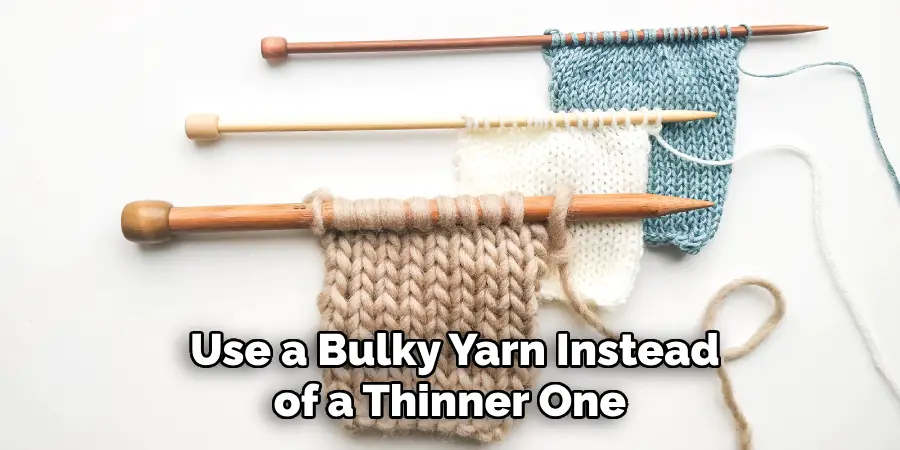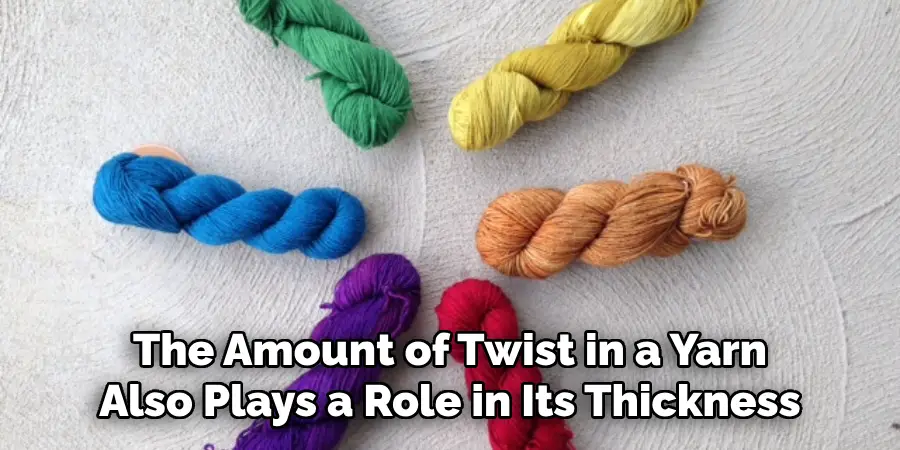If you’ve ever found yourself with yarn that’s too thin for your knitting or crocheting project, you may wonder how to make it thicker to achieve the desired look and texture. Fortunately, there are creative ways to bulk up your yarn and adapt it to your project’s requirements. This article will guide you through various techniques and methods for how to make yarn thicker.

Whether you want to create a unique blend of colors and textures or salvage thinner yarn from your stash, we’ll cover options such as plying, double stranding, and even using different crochet or knitting techniques to add thickness.
By the end of this guide, you’ll have the knowledge and skills needed to transform your yarn and ensure that your projects turn out as beautifully as you envision, even with thinner yarns.
Benefits of Making Yarn Thicker
There are many benefits to making yarn thicker. Some people prefer using thicker yarn for certain types of projects, while others simply enjoy the look and feel of a chunkier yarn. Whatever your reason may be, here are some potential benefits of making yarn thicker:
- Faster Projects: Thicker yarn means less stitches per inch, which can result in faster progress on your projects. This is especially great for larger items like blankets or sweaters, where using a thinner yarn may feel like it’s taking forever to complete.
- Easier to Work With: Thicker yarn can be easier and quicker to work with, especially for beginners who are still getting used to different crochet or knitting techniques. The thicker texture of the yarn can also make it easier to see your stitches, making it less likely for mistakes to be made.
- More Structure and Sturdiness: Thicker yarn tends to provide more structure and sturdiness to your projects, which can be beneficial for items that need to hold their shape, such as baskets or rugs. It can also make garments like hats or scarves feel warmer and more substantial.
- Unique Aesthetic: Thicker yarn can create a unique and eye-catching aesthetic in your projects. The chunkier texture can add dimension and depth, making your finished pieces stand out from items made with thinner yarn.
- Versatility: Thicker yarn can be used for a variety of projects, from home decor to wearable items. With so many different types of thicker yarn available, you can experiment and create all sorts of different projects to suit your needs and style.
10 Methods How to Make Yarn Thicker
1. Use a Bulky Yarn
One of the easiest ways to make your yarn thicker is to use a bulky yarn instead of a thinner one. Bulky yarns are usually heavier and more voluminous, which can help to give your project an extra bit of texture and warmth. They also tend to work up faster than thinner yarns, so you can finish your project in no time!

2. Use a Larger Needle Size
Using a larger needle size when knitting or crocheting is another great way to make your yarn look thicker and fuller. When using larger needles, you will be able to create larger stitches with more space between them, which will make the fabric appear thicker. This technique is especially useful for making sweaters or other garments that require extra warmth and coziness.
3. Hold Multiple Strands Together
Holding multiple strands of yarn together is another great way to make your projects look thicker and fuller. To do this, simply take two or more strands of yarn and hold them together as if they were one strand while you knit or crochet with them. This technique works best with similar-weighted yarns, but it can also be used with different weights for unique effects!
4. Make Longer Stitches
Making longer stitches is another great way to make your projects look thicker and fuller without having to use bulky yarns or large needles. To do this, simply increase the length of each stitch by adding extra wraps around the needle before pulling it through the loop on the previous stitch. This technique works best for items like scarves or blankets that don’t require precise measurements or shaping.
5. Add Texture With Cables
Adding texture with cables is another great way to make your projects look thicker and fuller without having to use bulky yarns or large needles. Cables are created by crossing two sets of stitches over each other in order to create intricate patterns that add texture and dimension to any project. This technique works best on items like sweaters and hats that have some structure and shape already built into them.

6. Increase Your Gauge
Increasing your gauge is another simple yet effective way to make your projects look thicker and fuller without having to use bulky yarns or large needles. Increasing your gauge means changing the number of stitches per inch in order to create a denser fabric with more texture and warmth than what would be created with a smaller gauge size. This technique works best for items like sweaters or blankets that need extra insulation from cold temperatures outside!
7. Crochet Loosely
Crocheting loosely is another great way to make your projects look thicker and fuller without having to use bulky yarns or large needles! By crocheting loosely, you will be able to create larger stitches that will give your project an extra bit of texture and warmth while still maintaining its shape and structure as desired!
This technique works best for items like sweaters, hats, mittens, scarves, etc., where you want some extra coziness but still need precise measurements/shaping!
8. Use Chunky Yarns
Using chunky yarns is another great way to add thickness and fullness without having to use bulky yarns or large needles! Chunky-weight yarns are usually heavier than regular-weight ones but still maintain their softness; this makes them perfect for creating cozy garments like sweaters or hats that need some extra insulation from cold temperatures outside!
9. Add Pompoms
Adding pompoms is another great way to add thickness and fullness without having to change anything else about the project itself! Pompoms come in all shapes and sizes colors so they are perfect for adding an extra bit of fun flair to any item – from hats, mittens, sweaters, etc! Not only do pompoms provide an aesthetically pleasing touch, but they also help keep warm too!
10. Double Strand It Up
Doubling up strands of thin weight yarn is another great way add thickness and fullness to any item – from hats, mittens, scarves, etc! Simply take two strands same color (or different colors!), hold together knit crochet with them as if they were one strand – voila, you have doubled the thickness fullness of any item desire!

Things to Consider When Making Yarn Thicker
When it comes to knitting or crocheting, sometimes you may want to use thicker yarn for a project. Thicker yarn can create a chunkier and more textured look which can add depth and interest to your final product. However, not all yarn is created equal and some may be easier to make thicker than others.
Here are some key things to consider when making yarn thicker:
Fiber Content
The type of fiber used in the yarn will greatly affect its ability to be made thicker. Natural fibers such as wool, alpaca, and cotton can typically be plied or spun together to create a thicker yarn. This is because these fibers have natural scales that interlock with each other when twisted, creating a stronger bond between strands.
Synthetic fibers, on the other hand, may not have this same interlocking ability and may be more difficult to make thicker.
Ply
The ply or number of strands twisted together in a yarn can also impact its thickness. Generally, the more plies a yarn has, the thicker it will be. So if you have a single-ply yarn that you want to make thicker, you may want to consider plying it with another strand of the same yarn or a different one.
Twist
The amount of twist in a yarn also plays a role in its thickness. A tighter twist will result in a thinner yarn, while less twist will create a thicker yarn. So if you’re looking to thicken up your yarn, try unraveling some of it and re-twisting it with a looser twist or plying it with another strand to create a thicker yarn.

Conclusion
It’s possible to make your yarn thicker without diminishing the quality of it. From using an artisanal needle felting technique to experimenting with a spinning wheel, there are various ways you can achieve a desired thickness for your yarn. Crafting is an art form – take the time to learn the basics of making yarn thicker and make it part of your creative process.
Whether you’re knitting sweaters and hats or crocheting doilies, mastering how to make yarn thicker will ensure that you get the most out of each project. So, don’t wait – start researching different methods today and embark on a journey towards crafting satisfaction.

